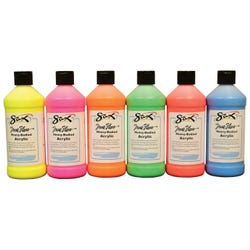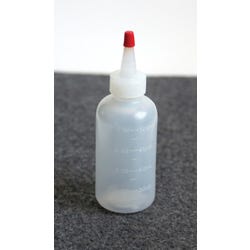Jackson Pollock Expressions
.jpg)
Description
Lesson Plan and Artwork by Ed Leary
Students will appreciate the fluid quality of paint as it falls onto the canvas in a seemingly free technique to form a design. Fredrix® Warp Resistant Canvas Panels provide a distinct paint-gripping "tooth", perfect support for your Jackson Pollock expression. The entire area of the canvas is firmly glued to the board. Sides are turned under and glued to prevent fraying and separation.
Objectives
- Establish a design on Fredrix® Warp Resistant Canvas Panels using the Jackson Pollock technique of exerting the controls of: color, texture, line, form, shape and center of interest in creating a subject matter.
Supplies Needed
Fredrix® Warp Resistant Canvas Panels, 9" x 12", Pack of 3
Fredrix® Warp Resistant Canvas Panels, 8" x 10", Pack of 3
Fredrix® Warp Resistant Canvas Panels, 11" x 14", Pack of 3
Sax® True Flow® Medium Body Acrylic Paint, Assorted Colors, 1 pint bottles, Set of 12
Sax® True Flow® Medium Body Acrylic Paint, Fluorescent Colors, 1 pint bottles, Set of 6
Squeeze bottle, 4 oz.
*Here are the supplies needed for this lesson plan for reference. Find a convenient carousel of shoppable products for this lesson below.
Standards
Standard #1: Generated and conceptualize artistic ideas and work.
Standard #2:Organize and develop artistic ideas and work.
Standard #5: Develop and refine artistic work for presentation.
Standard #7: Perceive and analyze artistic work.
Standard #10: Synthesize and relate knowledge and personal experiences to make art.
Instructions
1
Students will begin by examining Jackson Pollock's work and his seemingly free technique of painting; Pouring, dribbling, splashing, etc., as it falls onto the primed/painting surface.
2
After a color palette is determined, fill empty squeeze bottles, (colors and quantity) according to the class size.
3
Select the orientation of the painting: Landscape or portrait.
4
Select subject matter: sea life, floral, cityscape, non-objective, etc.
5
Apply acrylic wash to a Fredrix® Warp Resistant Canvas Panel as a complementary background color that will serve as a contrast. Note: Leave some open areas in the background.
6
Starting with the lightest tint/shade, start to build the subject matter with streams of squeezed paint. Note: Any texture or designs that start to develop at this time can be repeated with contrasting colors at a later stage.
7
Continue to build the design/subject matter using a variety of colors and textures. Remember: "The art of the arts is to know when to stop."
8
Curate with Title, Artist's name and date.





